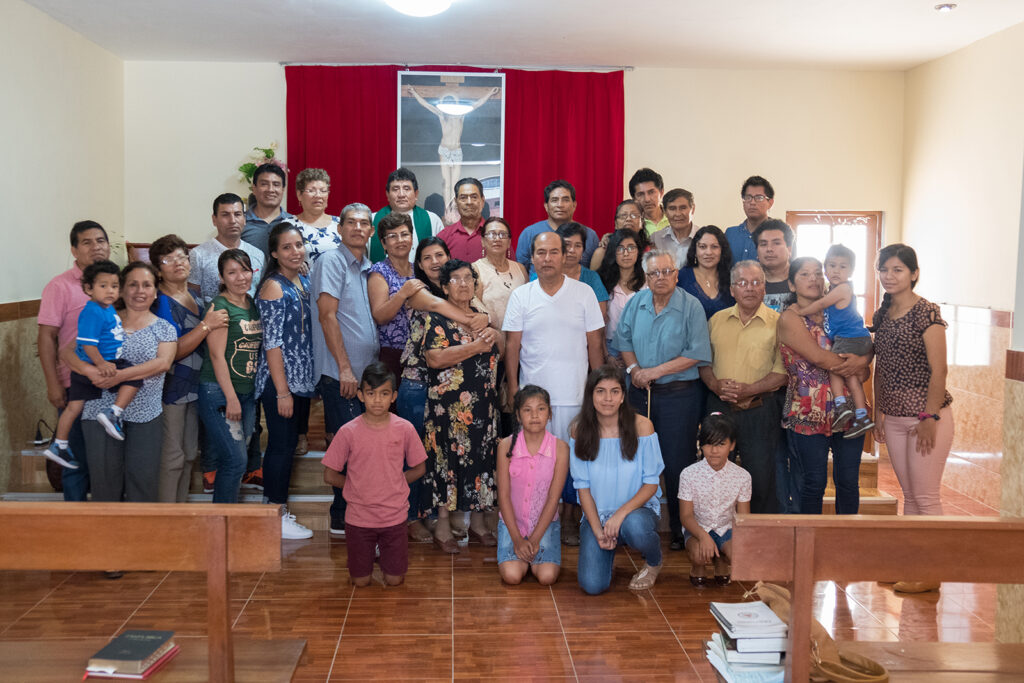



Our Work In Peru
Introduction
Missionaries from the Evangelical Lutheran Synod first proclaimed Christ to the people of Peru in 1968. They began their work in Lima not only in the center of the city but also in the poorest and most needy neighborhoods. God over time has greatly blessed the work of these missionaries.
Seminary
Peruvian national church workers were needed to serve the congregations and to reach out to the rest of the country. To meet that need, the missionaries first began training devout laymen to serve as leaders of newly formed churches. In time their training developed into preparation for the public ministry of Word and Sacrament. These men studied in the seminary established by the missionaries in Lima. There the seminarians studied traditional theological disciplines such as Scriptural interpretation, the Lutheran Confessions, Church History and practical theology. All the pastors, who are currently working in the different congregations of Peru, were trained in this seminary.
In September 2010, Pastor Segundo Gutiérrez was installed as the president of the seminary. Since that date, most of the classes were taught by Peruvian pastors, under the supervision of Missionary David Haeuser. Missionary Haueser retired in 2017 and the seminary is now under the supervision of the Peruvian leadership. The leadership is currently mentoring vicars and conducting extension seminary classes in the Amazon jungle city of Tarapoto.
Christian Day Schools
Just as Christian parents everywhere care for the spiritual education of their children, the fathers and mothers of the Peruvian church took seriously their obligations to train their children in God’s Word. Sunday Schools, confirmation classes and Vacation Bible Schools were established in the developing congregations. Teachers were trained, materials were gathered, and students were recruited in the effort to reach out to the neighborhoods near the churches.
In addition to the seminary, the Peruvian church also has two schools in Lima: Jesús Redentor and Martin Lutero. Currently, Jesús Redentor is not holding classes, while it is in the process of meeting new requirements. The other school, Martin Lutero, has nearly 200 students and is thriving.
Bringing the Gospel to the Three Regions of Peru
There are three regions that are served by the Peruvian church; Coastal, Mountain and Jungle.
The Coastal Region
In the crowded and teeming capital city of Lima and its dusty outlying barrios there are congregations served by Peruvian pastors in five districts: Ventanilla, Año Nuevo, Santa Beatriz, Dulanto, and Villa el Salvador. Another congregation is located in the fishing port city of Chimbote, 6 hours north of Lima. For many years this congregation lacked a leader qualified for the holy ministry. Some missionaries who worked in Lima visited this congregation and trained church leaders. The church is now served by one of the synod pastors.
The Mountain Region
The Andes Mountains form a majestic backdrop for the congregations in the villages and towns in the Ancash district several hours north of Lima. For many years people of the mountains left their homes and moved to Lima in search of jobs. Those who became members of our churches in the city earnestly desired to bring the Gospel to their families and friends in the Andes. Missionaries began regular trips to small villages in the mountains, who formed several congregations.
Several hours further north in the Andes Mountain range is the World Heritage site of Cajamarca This congregation was established by Peruvian pastors who studied at the Lima seminary.
The Jungle Region
Some members of Lima congregations had come from the San Martin district of northern Peru, in the eastern foothills of the Andes Mountains. Shouldn’t the Gospel be brought to their hometowns, also?
A third center for mission work in Peru, as a result, is based in this region. In it, there are congregations in three jungle communities: Louis Terry, Taiwan and Nueva Chazuta. With no roads available for travel, the Peruvian pastors travel the Huallaga by boat, and trek through the jungle on foot to reach these thatch-roof villages.
The leaders of these three communities travel every two months to the jungle city of Tarapoto to take seminary classes taught by the Peruvian pastors. Many of them become native missionaries traveling to the Upper Amazon basin, preaching the Gospel in cities and towns along the Huallaga River and its tributaries. In addition to the seminary, our missionaries opened a Christian school at Luis Terry. The school teaches elementary through high school students. This school, too, is thriving.
Building relationships through a network of acquaintances and family members, the Peruvian pastors now proclaim God’s Word in villages of these people, known as the Shawi, deep in the jungle.
In Conclusion
As the Peruvian synod continues to work in these three regions, the primary focus of ELS work in Peru is the ongoing brotherly support of the national church.